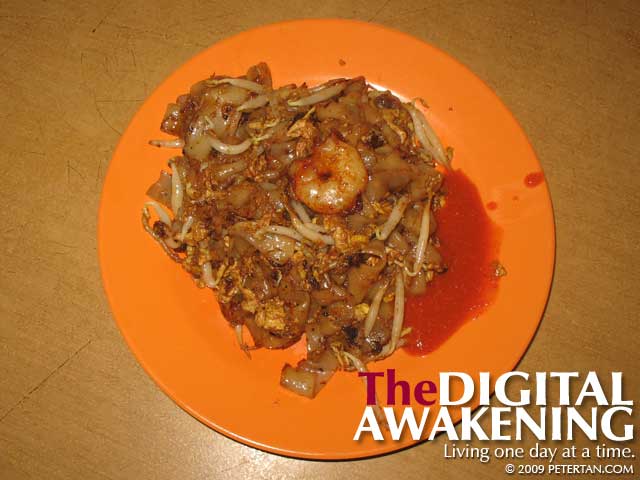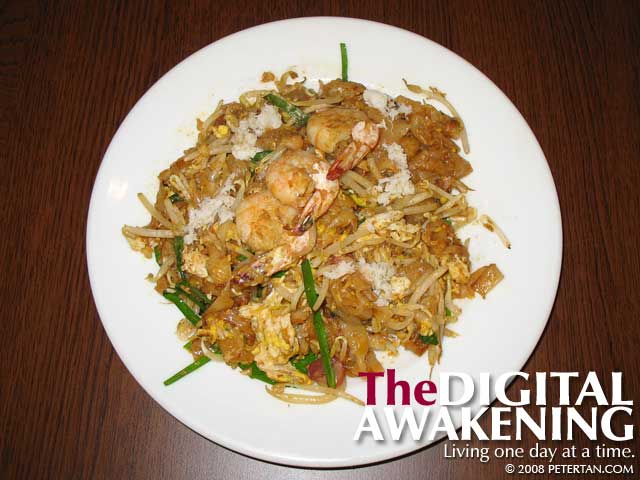Wuan had been telling me about how delicious the hawker food is at Restoran New Hollywood in Canning Garden. We passed it many times too on our way to Ipoh Old Town for lunch but have never stopped there for meals. This typical Chinese kopitiam is located along Jalan Lee Kwee Foh. It was only on last Tuesday that we finally dropped in for breakfast. Since we had a lunch appointment with her parents later, Wuan and I decided to share a plate of char koay teow. The signboard above the stall says Penang Banana Leaf Char Koay Teow.

Penang Banana Leaf Char Koay Teow.
Restoran New Hollywood, Canning Garden, Ipoh.
GPS: N04 36.131 E101 06.564
Wuan paid RM3.30 when our order arrived. It came with vinegared chilli sauce by the side and had the usual ingredients of bean sprouts, cockles and prawns but no chives or sliced lap cheong (Chinese waxed sausage). I am a “mai hum mai koo chai” (no cockles no chives) char koay teow lover. It did not matter to me whether it had chives or not but I would have preferred a few slices of lap cheong to vary the taste. Wuan on the other hand loves si hum in her char koay teow which she happily picked off from the plate. Contrary to the stall’s sign, there was no banana leaf lining the plate. I felt cheated.
My disappointment immediately disappeared when I chewed into my first mouthful. It tasted good although a little on the salty side. The aroma was what I would expect from a good plate of char koay teow. There was no raw smell from the bean sprouts, evidence that it was stir-fried in a well-heated wok. The lumps of egg that stuck to the koay teow made it taste even better.
I did not find any bak eu pok (crispy pork lard) as I picked through the dish. I asked Wuan. It was only then that she told me the food in the kopitiam is pork free. No wonder there were no lap cheong slices as well. This shows that one can cook a good plate of char koay teow without pork lard. It is more important that the sauces are correctly blended and the koay teow stir-fried in a well-heated wok.
I could not get used to having vinegared chilli sauce with my char koay teow. Good thing that it was poured onto the side and not the top. I did not stir it in. That aside, I will definitely drop by again to savour another plate of this halal char koay teow and the other hawker fare in the kopitiam that I have yet to try.

